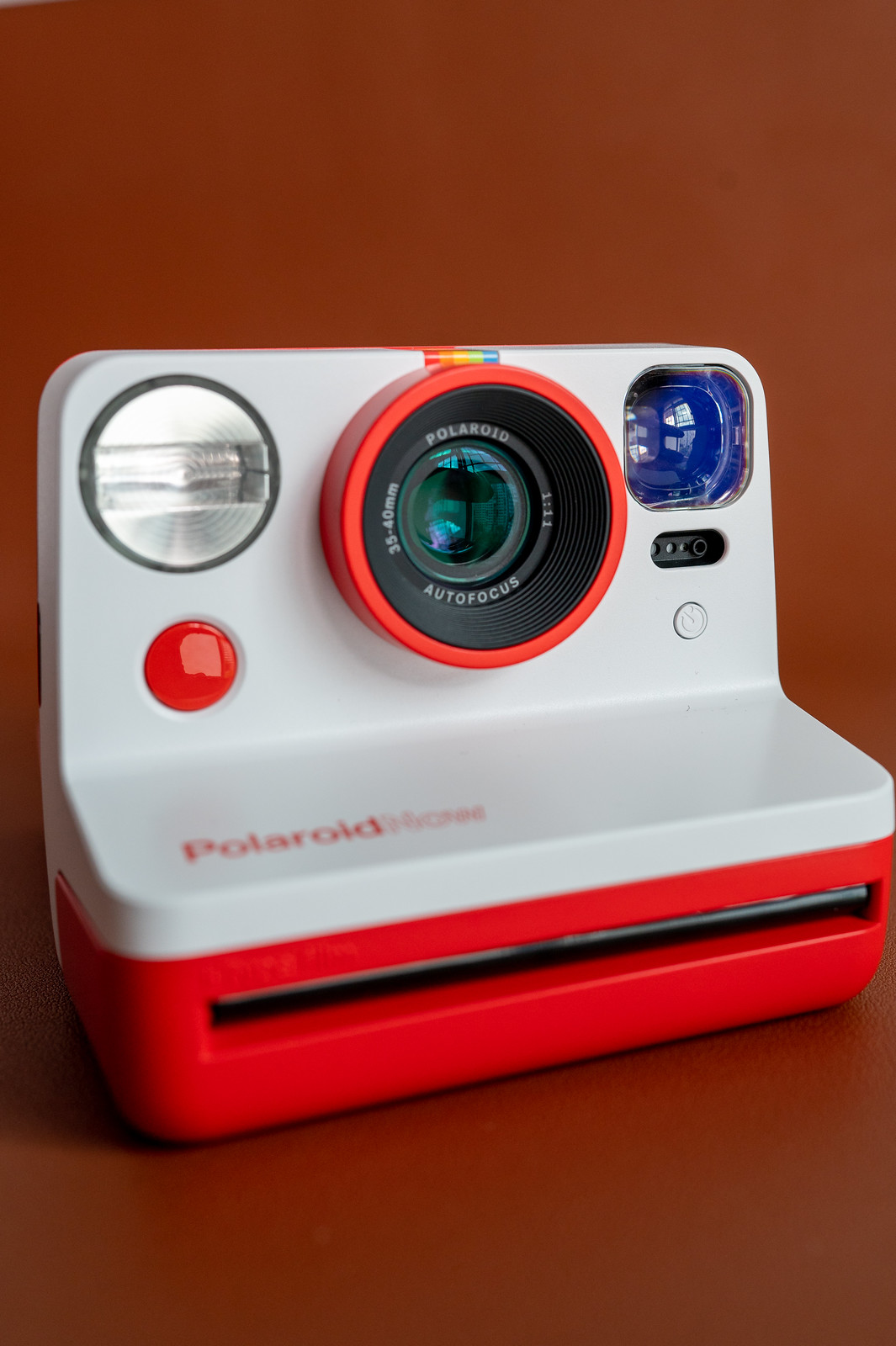Content and Review from Keith Wee - Singapore Based Photographer and Content Creator / Writer
Polaroid Now review – Upgrade worthy with Auto-focus!
Continuing the Polaroid journey after my last review of the Polaroid OneStep2 (link here), I am now back with my personal take on the latest version, the Polaroid Now Instant Camera and yes, look forward to my review on the Polaroid hi-Print printer later.
For those new to Polaroid, Polaroid is NOT the Instax film made by Fujifilm and here is a concise summary of Polaroid history:
Established in 1977 and revolutionising the concept of instant film photography, 2008 was the year that the Polaroid instant camera died quietly due to the gaining popularity of Fujifilm’s Instax and of course, the explosive growth of cellphone cameras technology.

But what is more amazing is Polaroid’s revival. A group of Polaroid fans bought the last remaining instant film factory in the Netherlands in a bid to revive it, naming their endeavour the Impossible Project. (I guess they felt it was akin to an impossible task then to revive the brand but hey, they succeeded!)

The trend towards nostalgia later proved to be a source of support and later in 2017, the project was rebranded as Polaroid Originals, and again, today I am glad to share more on the latest iteration, the Polaroid Now Instant film camera.

Technicalities:
- Works with 600 Film and i-type Film formats.
- Dimensions: 150 mm(L) x 112.2mm
x 94mm (H). Weight: approx 434 grams
- Lenses: Coated Optical grade Polycarbonate and Acrylic lenses
- Shutter system: Custom design, using precision step motor for shutter
- Lens: Autofocus (YES!) via two fixed zones (0.55m-1.3m, 0.6m-infinity)
- Battery: High performance lithium ion battery (750mAh), rechargeable via USB – fixed and non-removable.
- Comes in at least 8 colours (Orange/Red/Yellow/Blue/Green/White/Mandalorian/Black)
Image areas are 79mm x 79mm in a 1:1 Square format, similar sized to the Instax SQ and significantly larger than the Instax Mini.

Controls and Performance:
As per Polaroid norms, the film pack loads into the front, one gets eight shots per pack and of course ejects from the front. Loading film packs is super straightforward, press the release button, and push the replacement cartridge in and the camera will ‘spit’ out the protective plastic film and one is ready to go shooting.

Ejected film is held in place by a plastic lip, and takes around 10-15mins to fully develop. The ‘lip’ ensures that the film will not drop to the ground too, nice design. There is no need to ‘flick’ the film per so many cliche films and its best to simply leave it in shade while it develops.

Controls are lovingly straightforward, a red button on the front sets focus and acts as the shutter button. On the rear one gets a yellow power switch and flash control, with a nice bright LED display showing the number of shots left in the pack.


One lovely part of the Polaroid Now is that (depends on how you see it) is that it has zero connectivity controls, no wifi, no Bluetooth and is a pure film camera. A full charge easily covers approximately 20 packs of films – that’s 160 shots and frankly it is not likely most can afford to shoot 100 Polaroid shots in one sitting from the cost.


One thing I prefer in the Polaroid Now vs the OneStep2 other than the addition of auto-focus via two fixed zones. (Close up lens at 94.96mm, Distant at 102.35mm) Note that optically formula wise, one still get optical grade plastics, always room for further improvement but still decently good.

Autofocus is frankly acceptable. I did get shots that were out of focus (ouch!) but Yeap, I got more hits over misses. Obviously this is not a camera one uses to shoot running horses anyway. Like all cameras, it’s important to take note of the minimum focusing distance around 0.55m.
Color and Output:
I shoot a lot of instant films, namely mostly Instax from Wide to Square to the Mini with the Square being my favourite. In comparison, yes, Polaroid films are much loved due to their large size, however one has to note that colour output in generally is slightly on the muted side, which I surmise is a Polaroid colour character. The current instagram filter-loving crowd might find the lack of punch initially a tad tough to get used to but once one’s starts shooting it is just a matter of getting used to it.

One draw of instant films whether Polaroid or Instax is the spontaneity of the output and I am glad to say that well, this is fully produced in the Polaroid Now.

Conclusion:
For the camera’s low entry price, the Polaroid Now will entice some buyers. Nostalgia for happier, unscripted spontaneous times, the novelty of instant film, the colourful look and of course, the lovely feeling of seeing one’s shot develop all stand as reasons.

If I am to pick at anything, it is the cost of the films. At SGD30 (approx USD22) for a pack of 8 pieces, a click is around SGD3.75 (USD2.80), not small change.
Image quality wise, the Polaroid Now delivers better image quality over the OneStep2 which personally I feel is an important factor, and controls are classically straightforward in design. Frankly if I were to do a manual for the Polaroid Now, I can probably fit the whole thing into a name card size.

The two zone autofocus is a big improvement in its usability and with the improved metering in its flash system, the Polaroid Now makes for a worthy upgrade or instant camera to consider.
I have been also thinking, maybe the next step Polaroid can do to bring more users into their fold is consider different film sizes like how we have the Instax Wide, Square, Mini etcetera but at the same time to take note to not overdo things by going the Instax way of releasing multiple editions of the same camera in a year.
What are your thoughts about Polaroid?
Thank you for reading.
*Disclaimers:
1. The writer paid for the Polaroid films for this review, the Polaroid Now instant camera was on loan from the kind local distributorship for the purpose of review.

